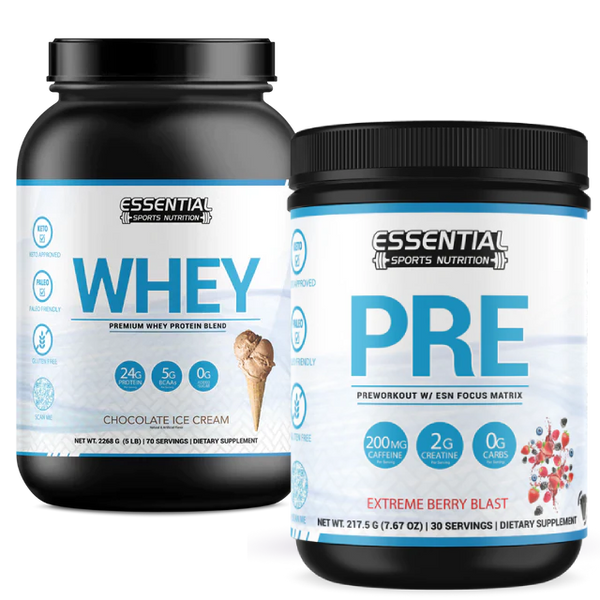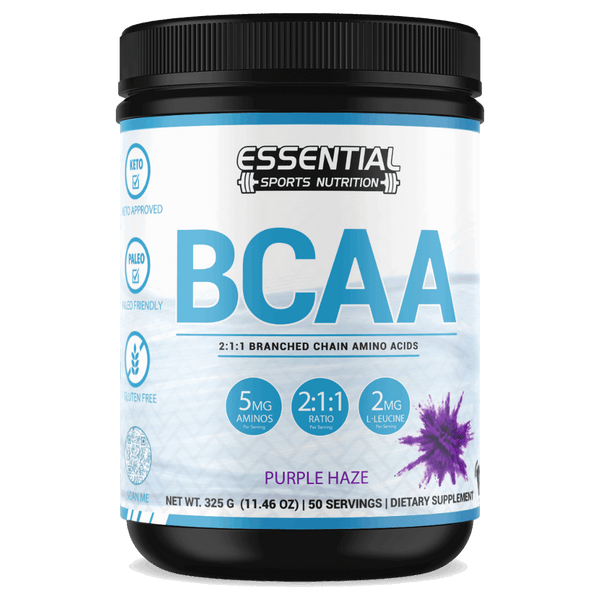Master Dumbbell Pullovers with Proper Form, Muscles Worked, and Variations
Master the dumbbell pullover for a sculpted upper body. Maintain a flat back, engage your core, and concentrate on controlled breathing. This exercise engages chest, back, and triceps, improving flexibility and targeting hard-to-reach muscles. Beware of arching your back too much and using excessive weight. Explore variations like the single-arm pullover for added challenge. Strengthen and stabilize your core to prevent back strain and enhance overall performance. Gradually increase resistance to avoid injury and promote muscle growth. Harness the full potential of your workout with this dynamic exercise that boosts strength and stability.

Key Takeaways
- Maintain flat back, engage core, and breathe properly for correct form.
- Engage chest, back, triceps; improve shoulder mobility, strengthen back muscles.
- Avoid back arching, excessive elbow bending, and rushing through the exercise.
- Try variations like single-arm or stability ball pullovers for added challenge.
- Gradually increase resistance for muscle growth, endurance, and injury prevention.
Benefits and Proper Form for Dumbbell Pullovers Exercises
To maximize the effectiveness of your dumbbell pullovers, focus on maintaining a flat back and engaging your core muscles throughout the entire movement. Doing this guarantees that your body is properly aligned, reducing the risk of injury and allowing your muscles to work efficiently. Remember to bend your elbows slightly to prevent unnecessary strain on your joints. As you lower the dumbbell behind your head, concentrate on your breathing and execute the movement in a controlled manner. It's vital to check that your shoulders are mobile and not under excessive pressure during the exercise.
Proper form for dumbbell pullovers also includes extending your arms over your chest with elbows slightly out. This position targets the muscles effectively and helps you avoid unnecessary stress on your shoulder joints. Embrace these form tips to make the most out of your pullover routine and achieve greater results in your fitness journey.
Benefits of Dumbbell Pullovers
Engage multiple muscle groups simultaneously and improve your overall upper body range of motion with the powerful benefits of dumbbell pullovers. This versatile exercise offers a range of advantages that can elevate your workout routine and enhance your physical fitness:
- Muscle Engagement: Dumbbell pullovers target the chest, back, and triceps all at once, promoting muscle growth and strength across these key areas.
- Enhanced Flexibility: By improving shoulder flexibility and mobility, pullovers enable you to perform a wider range of upper body movements with greater ease.
- Back Strength: Targeting hard-to-reach back muscles, this exercise aids in strengthening your back, contributing to better posture and overall back development.
Incorporating dumbbell pullovers into your workout regimen can yield significant benefits beyond just muscle growth, including improved stability, coordination, and overall upper body function. Embrace the challenge and reap the rewards of this dynamic exercise.
Common Mistakes in Dumbbell Pullovers
Improving your form and technique is essential in maximizing the benefits of the dumbbell pullover exercise. Avoid arching your back excessively during pullovers to prevent lower back strain and maintain effectiveness. Similarly, refrain from bending your elbows too much, as this can shift the focus away from the targeted chest and back muscles and onto your arms. Keep your hips on the bench throughout the movement to stabilize it and reduce the risk of injury. Rushing through the exercise without focusing on controlled movements compromises its benefits. Using excessive weight compromises your form, potentially leading to strain on your shoulders and back. Stay mindful of these common mistakes, and focus on executing each rep with proper form to make the most out of your dumbbell pullover routine.
Bent-Arm Dumbbell Pullover Variation
Get ready to level up your dumbbell pullover game with the bent-arm variation. Keeping your elbows slightly bent can shift the focus to your chest and back muscles, enhancing muscle engagement. This tweak in form can provide a fresh challenge and help you target specific muscle groups effectively.
Bent-Arm Benefits Explained
With the bent-arm dumbbell pullover variation, you can amplify your chest and triceps workout while experiencing a deeper stretch and engaging different muscle groups. This variation effectively targets specific upper body muscles and provides a unique workout experience. By bending your elbows during the movement, you shift the emphasis from the lats to the chest, allowing for a more focused workout. The increased range of motion in the chest muscles due to the deeper stretch adds to the effectiveness of this variation. Including the bent-arm variation in your routine can help you isolate and strengthen your chest and triceps while enhancing your overall upper body strength and muscle definition.
- Targets chest and triceps more effectively
- Engages different muscle groups
- Provides a deeper stretch for enhanced results
Proper Form Guidance
For best results in the bent-arm dumbbell pullover variation, maintain a slight bend in your elbows throughout the exercise to effectively target the chest, back, and triceps muscles. This slight bend allows for a shift in emphasis from the lats to the triceps, providing a thorough workout. Engage your core to stabilize your body during the movement, ensuring proper form and maximizing muscle engagement. The bent-arm variation offers a unique range of motion compared to the traditional straight-arm pullover, activating different muscle groups for a well-rounded workout. Focus on controlled movements and breathing to optimize the benefits of this variation. Keep pushing yourself, and soon you'll see the positive impact of the bent-arm dumbbell pullover on your strength and muscle development.
Single-Arm Dumbbell Pullover Variation
Get ready to boost your workout with the single-arm dumbbell pullover variation! This exercise will fine-tune your form for efficiency, ensuring you make the most out of every rep. Embrace the benefits of this variation to level up your unilateral strength and enhance muscle balance like never before.
Form for Efficiency
To maximize the effectiveness of the single-arm dumbbell pullover variation, focus on maintaining a strong and stable core throughout the entire movement. Engaging your core helps prevent unnecessary strain on your lower back and enhances the isolation of the targeted muscles. Here are some key tips to guarantee efficient form:
- Keep your hips steady and planted on the bench to avoid excessive arching.
- Control the movement by lowering the weight in a slow and controlled manner.
- Ensure your shoulder blades are retracted throughout the exercise for peak muscle engagement.
Benefits of Variation
Maintain a strong and stable core throughout the single-arm dumbbell pullover variation to enhance balance, muscle engagement, and address strength imbalances effectively. This unilateral exercise increases core activation and stability and improves muscle symmetry by isolating one side at a time. By focusing on individual arms, you can target specific areas of the chest and back, aiding in muscle growth and definition. Incorporating the single-arm dumbbell pullover into your routine adds variety, keeping your muscles challenged and preventing training plateaus. Embrace this variation to enhance your overall strength, balance, and muscle development, taking your fitness journey to the next level with targeted and effective workouts.
Stability Ball Dumbbell Pullover Variation

Enhance your core strength and stability by incorporating the stability ball dumbbell pullover variation into your workout routine. This challenging exercise targets your chest, back, and triceps and engages your core muscles for balance and coordination. Here are three key benefits of adding the stability ball dumbbell pullover variation to your fitness regimen:
- Improved Core Activation: The instability of the stability ball forces your core muscles to work harder to maintain balance throughout the exercise, leading to increased core strength.
- Enhanced Muscle Recruitment: By incorporating the stability ball into your dumbbell pullovers, you activate smaller stabilizing muscles that may not be engaged during traditional pullovers, resulting in a more thorough workout.
- Functional Training Approach: Utilizing the stability ball challenges your proprioception, enhancing your body's ability to coordinate movement and improve overall muscle recruitment for functional activities in daily life.
Decline Bench Dumbbell Pullover Variation
Ready to take your pullover game to the next level? The decline bench dumbbell pullover variation is about to become your favorite chest exercise. Get ready to feel the burn in your lower pecs, engage that core, and enhance your chest development like never before!
Benefits of Decline Version
When seeking to amplify your chest and shoulder workout routine, incorporating the decline bench dumbbell pullover variation can be a game-changer, targeting specific muscles essential for strength and stability. Here are some benefits of the decline version:
- Increases range of motion, engaging lower chest muscles.
- Challenges core stability and activates upper chest.
- Targets the serratus anterior muscle for enhanced shoulder stability and strength.
Proper Form Tips
To optimize your performance and results with the decline bench dumbbell pullover variation, maintain a slight bend in your elbows throughout the movement. This technique effectively targets the chest and lats. Engage your core to prevent excessive back arching, ensuring optimal muscle engagement. Lower the dumbbell behind your head with control to maximize the benefits. Remember to breathe correctly by inhaling during the eccentric phase and exhaling during the concentric phase. Adjusting the bench to a decline position challenges your chest workout and activates different muscle fibers. Stay focused on form, control, and breathing to make the most out of this variation.
| Proper Form Tips for Decline Bench Dumbbell Pullover | |
|---|---|
| Maintain a slight bend in the elbows | Target chest and lats effectively |
| Keep core engaged and avoid excessive back arching | Optimal muscle engagement |
| Lower dumbbell behind the head with control | Maximize exercise benefits |
Using a Barbell for Pullovers

Consider using a barbell for your pullovers to add a new dimension to your workout routine and challenge your muscles in different ways. Barbell pullovers offer unique benefits that can help you enhance your strength and muscle development effectively:
- Different Grip Variation: The barbell allows you to experiment with various grip positions, providing a different feel compared to using dumbbells.
- Heavier Weight Options: With a barbell, you can increase the weight load, pushing your muscles to work harder and grow stronger.
- Engage Stabilizer Muscles: The longer lever arm of the barbell engages additional stabilizer muscles, enhancing overall muscle activation and development.
Engaging Core in Dumbbell Pullovers

Engage your core muscles throughout dumbbell pullovers to enhance stability, prevent injuries, and maximize muscle activation. By focusing on your core, you protect your lower back and improve your overall body control and coordination. Contracting your core during this exercise targets multiple muscle groups simultaneously, making each rep more effective. Here's a table to highlight the benefits of engaging your core in dumbbell pullovers:
| Benefits of Engaging Core in Dumbbell Pullovers |
|---|
| Maintains stability and proper form |
| Prevents lower back strain and injuries |
| Supports the spine and enhances body control |
| Improves balance and coordination |
Gradually Increasing Resistance
When looking to enhance your dumbbell pullover workout, gradually increasing the resistance is an essential step toward achieving muscle growth and strength development over time. Incrementally challenging your muscles with more weight prevents strain and promotes progressive overload, leading to improved muscle gains. Here are some key benefits of gradually increasing resistance in your dumbbell pullovers:
- Preventing muscle strain: By slowly adding weight, you reduce the risk of overexertion and potential injuries.
- Promoting muscle growth: Incremental resistance challenges the muscles, stimulating growth and strength development.
- Improving endurance and stability: Gradually increasing resistance enhances muscle endurance and stability in your shoulders and core, supporting better overall performance.
Conclusion

In conclusion, mastering proper form in dumbbell pullovers is key to maximizing their benefits and avoiding potential injury. By maintaining a stable core, a slight bend in the elbows, and controlled movement throughout the exercise, individuals can effectively target multiple muscle groups, including the chest, back, and triceps. The versatility of dumbbell pullovers works for various grip positions and angles, enabling customization to target specific areas of the upper body. Furthermore, incorporating variations such as using different equipment, adjusting bench angles, or performing unilateral movements can add complexity and challenge to your workouts. Whether you're aiming to build strength, improve muscle definition, or enhance flexibility, integrating dumbbell pullovers with proper form and thoughtful variations can contribute significantly to a well-rounded fitness routine.
Dumbbell Pullover Alternatives, Muscles Worked, and Benefits FAQs
Q: What muscles are worked during dumbbell pullover exercise?
A: The dumbbell pullover primarily targets the lat muscles, but it also engages the upper back, chest, and arms.
Q: How do you perform the dumbbell pullover with proper form?
A: To perform the dumbbell pullover properly, lie on a bench with only your upper back on the bench, keep your arms straight, and slowly bring the dumbbell lower towards the floor behind your head.
Q: What are some good dumbbell pullover alternatives?
A: Some pullover alternatives include cable pullovers, ball pullovers, and other variations that target the back and chest muscles.
Q: What are common pullover mistakes to avoid?
A: Some common mistakes include bending the arms, not keeping the elbows slightly bent, and using momentum to lift the weight instead of focusing on proper form.
Q: How many reps should I do when performing the dumbbell pullover?
A: The number of reps can vary based on your fitness level and goals, but a general guideline is to aim for 8-12 reps per set to build strength and muscle endurance.
Q: What muscle groups are targeted by the dumbbell lat pullover?
A: The dumbbell lat pullover primarily targets the latissimus dorsi muscles, which are located in the back and help with various pulling movements.
Q: What Are the Benefits of Dumbbell Pullovers?
A: To reap the benefits of dumbbell pullovers, focus on sculpting your chest, back, and triceps. Enhance shoulder flexibility and core stability. Work those hard-to-reach back muscles effectively. Whether at home or in the gym, this exercise is a versatile upper-body option.
Q: How Do You Do a Dumbbell Pullover with Proper Form?
A: To pull over properly, focus on maintaining control, engaging your core, and avoiding arching your back. Keep slightly bending your elbows as you lower the dumbbell behind your head. Take your time to maximize muscle engagement.
Q: What Is the Difference Between Straight and Bent Dumbbell Pullover?
A: In your workout journey, remember this: straight pullovers stretch those lats, while bent ones pump those tris. Choose wisely based on your goals. You're in control—you're sculpting your way to strength.




























